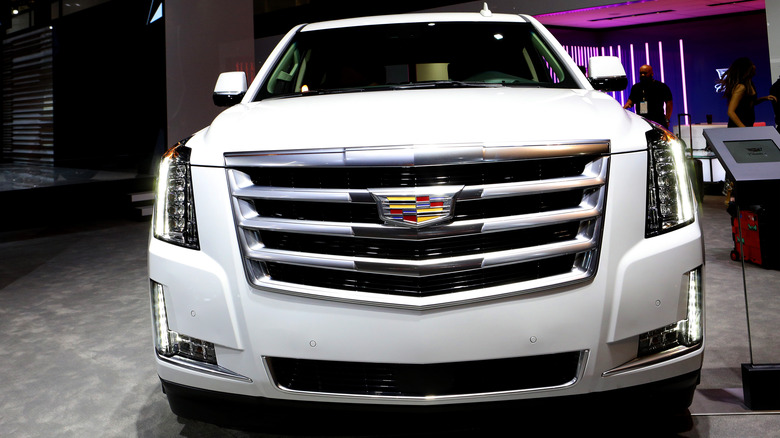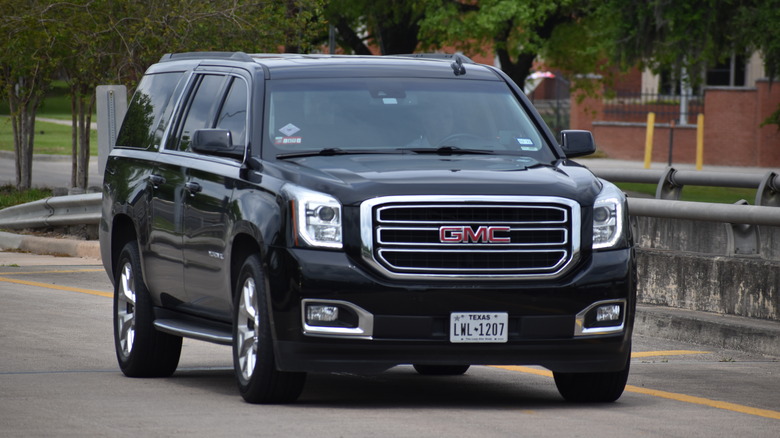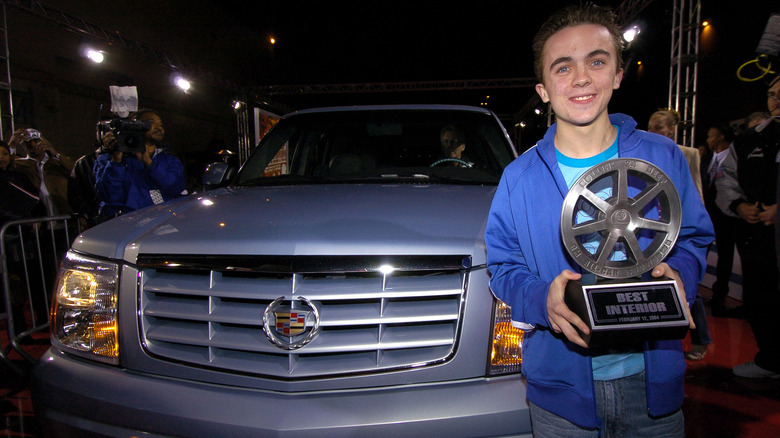How The Escalade Saved Cadillac From Sinking Into The Grave
We may receive a commission on purchases made from links.
During its more than a century in business as one of the big three United States automakers, General Motors has been the custodian of more than 40 different brands, all but four of which have been discontinued. The ones that remain are Buick, GMC, Chevrolet, and Cadillac, but a quarter-century ago, GM's luxury brand almost joined Pontiac, Plymouth, Geo, Saturn, and others in the graveyard, only to be saved by the surprisingly popular Escalade.
At the time, Cadillac's lineup was strictly limited to passenger cars, but the domestic market had become ravenous for SUVs, and GM was forced to consider the possibility of developing a truck for their upscale brand. In his book Fin Tales: Saving Cadillac, America's Luxury Icon, Cadillac division general manager John Smith tells how he and GM CEO Jack Smith (who understandably each often received mail that was intended for the other executive) teamed up to bring the Escalade to market against the advice of marketing gurus.
John Smith told Car and Driver, "Since joining Cadillac in February [1997], every conversation I had with dealers included questions about — if not demands for — a luxury truck."
The Escalade started as a rebranded GMC Yukon
In the late 1990s, GM was in dire straits and began dropping models and brands from its lineup. "BrandScape was a vehicle market and brand positioning assessment that had been adopted by the GM North American Strategy Board in 1996," Smith explained. "It was certainly needed to resolve undue overlap between the divisions, make better use of GM resources, and hopefully produce more distinctive and profitable products."
But as BrandScape trimmed back on GM's offerings, so too came a reduction in GM's allowable field of vision. Fortunately, the overwhelming United States market push for SUVs created enough space for Smith to find room to develop the vehicle that became Cadillac's savior, but he and an ally had to start from an anchor point within a different GM brand. "Terry Henline in design was developing the exterior and interior specifics, using the GMC Yukon as a starting point, and with precious few degrees of freedom," Smith explained. They replaced the GMC block lettering on the front grille with the Cadillac wreath and crest and made a few subtle changes to the interior, but the first Escalade was essentially nothing other than a rebadged Yukon.
The Escalade saved Cadillac
The Escalade got a redesign for the 2002 model year and began to take some steps away from its Yukon brother and establish its own identity. The new generation got an upgraded 6.0L Vortec V-8 that brought an 8,000-lb towing capacity, and with the new powerplant came some upgrades to the interior as well, including cooled seats and a Bulgari clock. In 2007, Cadillac introduced the third-generation Escalade, boosting the Vortec V-8 motor to 6.2 liters and 403 horsepower.
Between 2009 and 2013 Cadillac also offered a hybrid version of the Escalade, with two electric motors joining forces with a 6.0L V-8 to put out a combined 379 horsepower while consuming 20mpg city and 23mpg highway. A fourth-generation Escalade came in 2015, and another, more luxurious and technologically advanced version appeared in 2021.
The most recent iteration of the Escalade has been the most popular, with more than 40,000 Escalades sold in the 2021 calendar year. But it was the early run of the model that likely saved the brand and pulled GM out of the pressure cooker minutes before it blew. "For the $10 million invested in the original Escalade," Smith explained, "GM made approximately $200 million pre-tax during the model's brief, two-year life. At some point in the second generation's life cycle, the Escalade became the second-most profitable GM model (behind the Corvette). It also produced the majority of Cadillac's profits and consistently attracted a new, wealthier, and more youthful audience to the brand."


